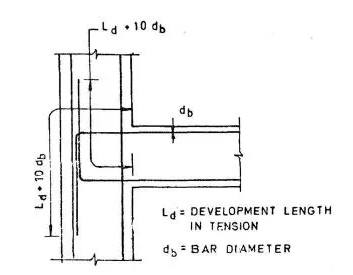Low Cost Roads Definition
 |
| Low Cost Road |
roads.'
Low-cost
roads are characterized by:
•
Design year traffic of less than 20 vehicles per day
•
Constructed generally close to the ruling grade of the natural ground
•
Constructed mainly from the in situ soils
•
Constructed on the basis of minimal designs.
Classification
of Low-Cost Roads
Low-cost
roads may be one of the following types:
(i)
Earthen roads
 |
| Earthen Road |
Earth
roads are roads constructed from the soils adjacent to the road without setting
any specific demands to the performance of the soils used. Earthen roads are
the most elementary form of roads. upon the nature of the soil and intensity of
rainfall and nature of the soil a camber of 1 in 20 to 1 in 25 in provided. In
hill roads, half the width is formed by cutting and the remaining portion of
the hill road is formed from filling behind the retaining walls to retain the
road formation. Earth roads are commonly built as the first step of a stage
construction process. In areas with no road access at all, the provision of an
earth road can be a significant access improvement for local communities.
(ii)
Gravel Road
 |
| Gravel Road |
A gravel road provides basic all-weather access to local communities in villages. Gravel layer fulfills two purposes. First of all, a well-compacted gravel surface with a good camber prevents water from penetrating into the road and functions as a base providing strength to carry heavy traffic. The most suitable material consists of a mixture of stone (35- 65%), sand (20- 40%) and clay (10•25%). Material is spread to the correct thickness and levels and compaction works are carried out using steel drum rollers with water to attain moisture content.
(iii) Soil Stabilized Roads
Good
road building materials can be difficult to find in some places. Due to the
prevalent geological features the soils may consist of only clay, silt and fine
sand etc. which are inappropriate for road building purposes. Rather than
importing materials from far away; it may be more feasible to improve the properties
of the local soils by mixing it with other soils or materials. ('.. variety of
techniques are available for improving their engineering properties such as:
a. Mechanically Stabilized Soil: In
mechanically stabilized soil, the properties of the local soils are improved by
mixing it with other soils containing the missing fractions. Sandy soils can be
mixed with clay, and clayey soils with sand and gravel.
b. Chemically Stabilized Soil: the most
common methods are the use of lime or cement to improve the soil properties.
The soil becomes stabilized because the cement or lime reacts chemically with the
soil particles and bind them together. The strength developed depending on the
concentration of cement or lime.
(iv) Macadam Roads:
 |
| Macadam Road |
This
type of road was introduced John Louden Me Adam and his contemporaries in 17th
century. The main content of a Macadam type pavement layer consists of almost
single size coarse aggregate (about 40- 60 mm size). The voids in the coarse
aggregate are filled with finer materials such as silt, fine sand or stone dust
to increase its density and stability.
• In dry and arid areas, this
process is carried out without the use of any water and referred to as dry-bound
macadam.
• A wet-bound or water bound macadam
uses water as a lubricant facilitating the movement of fines into the voids of the
coarse aggregate.
• Bituminous materials are also used to fill or partly fill the voids between coarse aggregate stone. The most common design in this respect is penetration macadam, in which the fine material is replaced with bitumen.
(v) Sealed Roads
Water Bound Macadam Construction One way of reducing the rate of deterioration of the surface is with the use of a sealed surface. A sealed surface comprises a thin film of bituminous binder, which is sprayed onto the gravel road surface and then covered with a layer of stone chippings, sand etc. The thin film of binder acts as a waterproofing seal preventing the entry of surface water into the road structure. The stone chippings, sand protect this film of binder from damage by vehicle tires, and form a durable, skid-resistant and dust-free wearing surface. In some circumstances the process may be repeated to provide double or triple layers of chippings. Sealed surface may be surface treatment (seal coat), slurry seal, sand seal, otta seal etc.





0 Comments